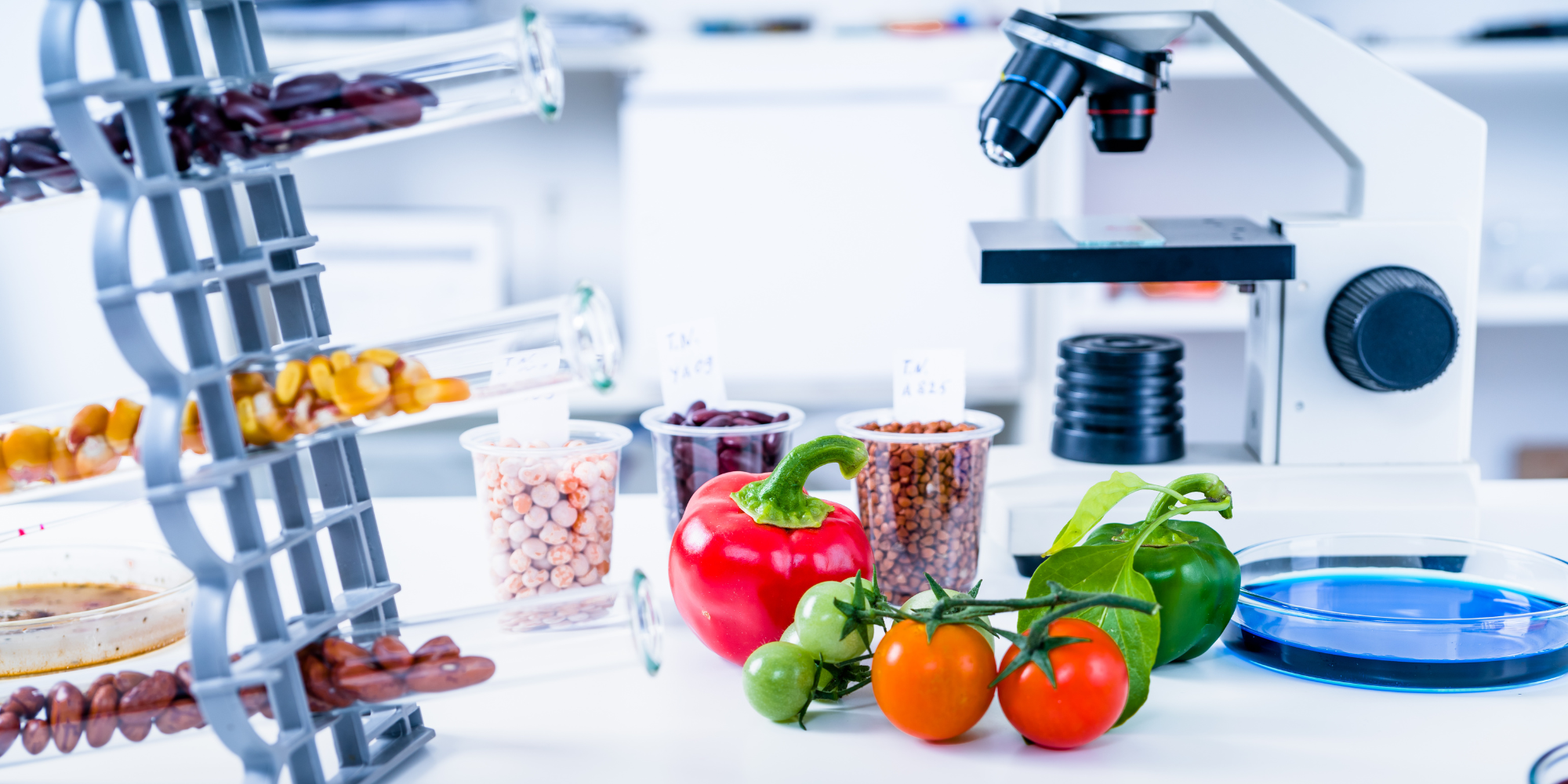Bioengineered (BE) food sounds like space-age nourishment featured in a science fiction movie. While the term bioengineered food is a relatively new one that commonly refers to GMO’s or Genetically Modified Organisms, this type of food has been around for thousands of years. Bioengineered food is the result of scientists’ quest to develop better ways to produce food sources. Before scientists got involved in the process, farmers around the world were helping natural evolution along by genetically modifying their crops through breeding in order to resist insect damage, require fewer pesticides, provide more nutrition and even change the size, shape, and flavor of the food. For example, centuries ago, a beefsteak tomato used to be the size of a small grape. Bioengineered food takes this process a step further by breeding or manipulating food in the laboratory setting.
By definition, bioengineered food “contains detectable genetic material modified by in vitro recombinant deoxyribonucleic acid (rDNA) techniques and that could not have been modified through conventional breeding or found in nature.”
What Foods are Bioengineered?
According to the United States Department of Agriculture – Agricultural Marketing Services (USDA-AMS), there are 11 bioengineered foods on the market. The USDA-AMS is responsible for keeping this list up to date. Although there are only 11 foods currently on the market, it has been estimated that 75% of processed foods on the grocery store shelves contain a BE ingredient like corn or soybeans. Here’s a list of the current BE foods:
- Alfalfa
- Apple (ArcticTM varieties)
- Canola
- Corn
- Cotton
- Eggplant (BARI Bt Begun varieties)
- Papaya (ringspot virus-resistant varieties)
- Pineapple (pink flesh varieties)
- Potato
- Salmon (AquAdvantage®)
- Soybean
- Squash (summer)
- Sugarbeet
Is Bioengineered Food Safe?
To date, bioengineered foods have caused no significant threat to human health. In fact, BE food goes through more testing of toxins, allergens, and nutrient composition compared to non-BE food. The U.S. Food and Drug Administration (FDA), U.S. Environmental Protection Agency (EPA), and U.S. Department of Agriculture (USDA) all agree that GMOs/bioengineered food is safe for human, plant, and animal health.
What to Look for on the Label
If BE food is safe to eat, you’re likely wondering why the need for labeling on food. The main reason is that consumers are concerned because they don’t understand the science behind GMOs and/or BE foods. Therefore, in response to consumer concerns, the FDA decided to require food manufacturers to label their food indicating BE ingredients beginning January 1, 2022. The labeling can be done in four different ways: symbols, text, digital, or text message, and will be found next to the nutritional information panel or on the front of the package.
The BE symbol looks like this:
Bottom Line: From a health perspective, GMO and BE foods are safe to consume. Moreover, our food supply has contained these genetically modified items for many years. When it comes to deciding what to eat, there are more important factors to focus on. At the end of the day, we want to seek out whole and minimally processed foods that give us the benefit of vitamins, minerals, phytocompounds, fiber, and antioxidants. Regardless, if a food contains GMO or BE ingredients, selecting foods close to nature ensures our best chance for superior health and longevity. Foods close to nature tend to be low in calorie density, naturally high in nutrients, and delicious.
For your health - focus on whole and minimally processed foods!
Kerri


.png)

